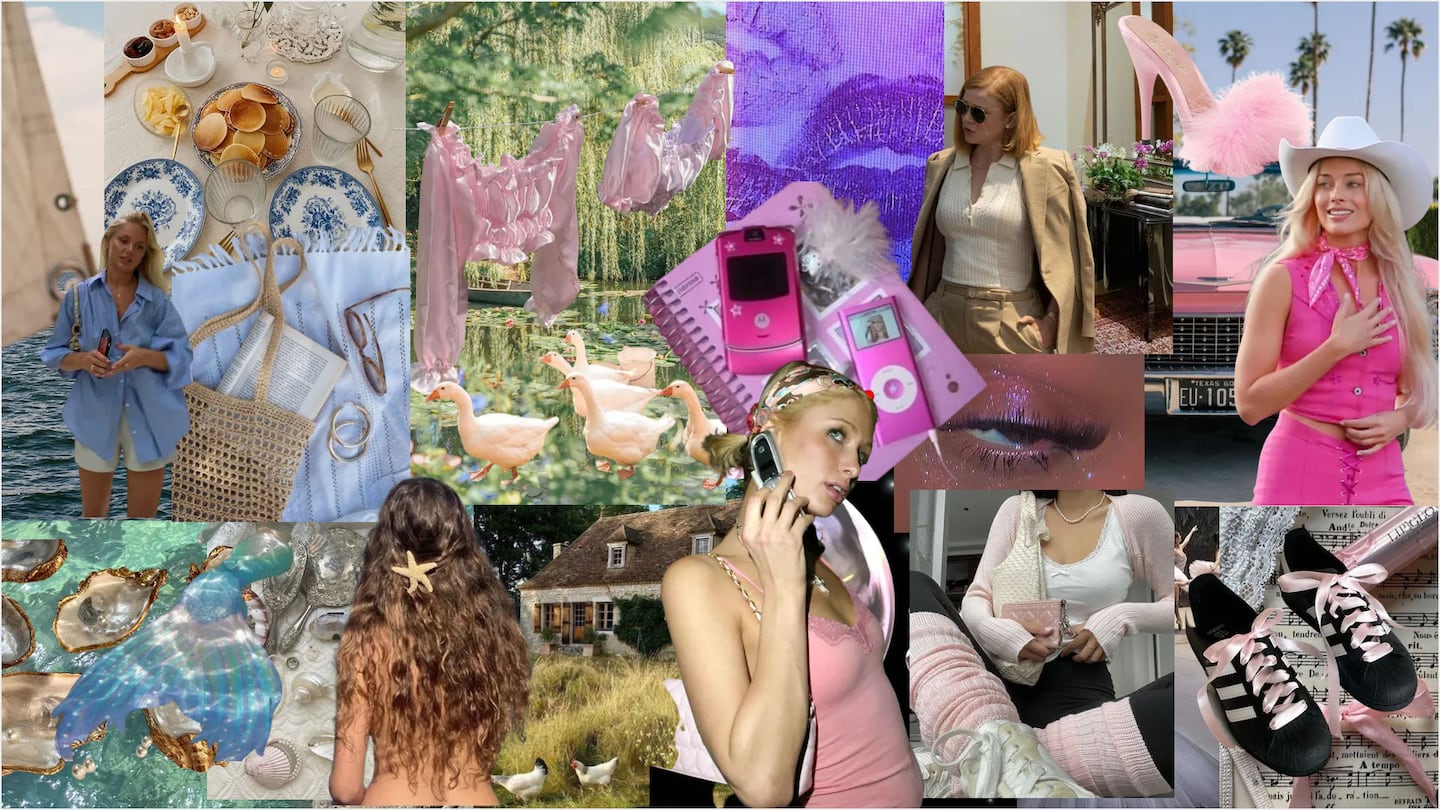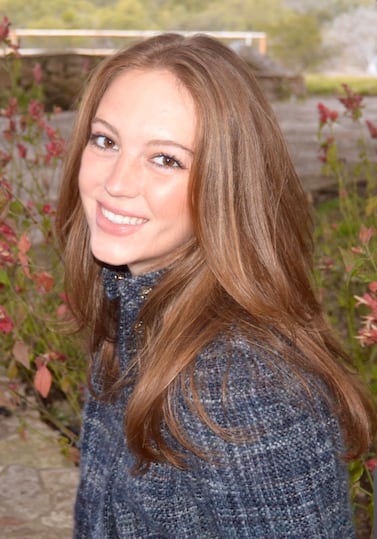
The Business of Fashion
Agenda-setting intelligence, analysis and advice for the global fashion community.

Agenda-setting intelligence, analysis and advice for the global fashion community.

From quiet luxury to mermaidcore to coastal grandmother to Barbiecore, fashion’s trend cycle has spun out of control.
Gone are the days Miranda Priestly canonised in “The Devil Wears Prada,” where the precise lineage of actress Anne Hathaway’s blue sweater could be traced from Oscar de la Renta’s cerulean gowns to a clearance bin in a corner. Social media — namely TikTok — has made anyone an agenda-setter, and today’s trends often start with the masses.
“It’s a shift away from the old trickle-down effect. We’re no longer waiting for luxury brands to show a trend or relying on the runway to start it,” said Kayla Marci, an analyst at retail intelligence platform Edited.
Pinning down a viral trend’s start and end is especially difficult now. Trends last anywhere from weeks to years. Concurrent trends can contradict each other; the minimalist quiet luxury and maximalist Barbiecore, for example, are dominating the conversation at the same time.
ADVERTISEMENT
Given that fracturing, what a trend is and what they’re worth to retailers is being called into question. What makes a trend a trend — and who decides? If trends come and go and reach smaller pockets of consumers, should brands even bother listening to the noise?
For now, brands are using viral trends to shape messaging, reach new audiences and make merchandising decisions. But how companies should think about interacting with specific trends depends on the trend — and on the brand.
“Figuring out what naturally connects with your customer and who you are as a brand is most important,” said Erica Larsen, executive vice president and partner at marketing agency Shadow.
BoF looks at five viral trends — Barbiecore, quiet luxury, mermaidcore, coastal grandmother and cottagecore — to unpack how today’s trends catch fire and how brands can react.
The artificial pause of the pandemic and TikTok’s rapid ascent affected cycles in ways it will take time to understand, said Lorna Hall, director of fashion intelligence at trend forecasting firm WGSN. Today, the construction of trends happens more like a conversation, where social media users, consumers, brands, retailers and celebrities play off each other.
Some tendencies are consistent: Macrotrends like minimalism (buying less and wearing simple, neutral-toned ensembles), or maximalism (synonymous with flashy, over-the-top fashion) have historically bubbled up in periods of socioeconomic turmoil or celebration. When a particular trend surfaces, a period of backlash follows.
“We came out of the pandemic and we had that maximalist moment, which was such a release,” said Hall. “Now, reality has bitten: not just the economic reality, but the reality of real life. We’re back to daily norms.”
The forces behind trends exist off TikTok, said Hall. “Quiet luxury,” which refers to subtle, sleek outfits sans logos, for instance, is one of the biggest trends of the moment, receiving around 40,000 mentions on social media in the past three months, according to Brandwatch. The pared-back look it embodies reflects a more cautious economic climate.
ADVERTISEMENT
Even if a trend aligns with a wider cultural or political moment, to break through, it needs a certain level of hype. Most trends have a peak that lasts about two to four months, Brandwatch found, but the ones with more staying power are often tethered to pop culture.
“The more pillars align, the more likely the trend is to be wider and deeper,” said Hall.
Films push a term to the centre of the cultural conversation — and keep it there with trailers and promotions, said Brandwatch’s head of communications Kellan Terry. Barbiecore is the best example: The buzz around the film, which has been happening for over a year, has kept the aesthetic topical.
Similarly, HBO’s “Succession,” which followed a family worth billions operating a media conglomerate and streamed its final season this past spring, fuelled a surge in mentions of “quiet luxury” online: Brandwatch saw mentions jump from 3,500 in April to nearly 18,000 in May. Mermaidcore is on the rise following “The Little Mermaid” premiere in May. Inspiration can come from outside film and TV, too: In 2020, Taylor Swift’s much-streamed albums Folklore and Evermore evoked a cottagecore aesthetic, but the trend’s biggest boom was driven by new cottagecore-esque features on the video game Animal Crossing, according to Brandwatch.
Being tied to a pop-culture moment increases the potential payoff for brands and retailers making investments in related clothing or partnerships, said Larsen. Brands including Aldo, Gap and Forever 21 have released collaborations tied to the upcoming “Barbie” film.
Some trends have the power to outlast a cultural moment. Cottagecore, for one, can now be considered a permanent aesthetic cultural descriptor because it’s seen steadily high mentions over the course of the past five years, said Terry.
Trends are becoming increasingly hard to pin down. The speed and muddled nature of today’s trend cycle means most viral trends represent a fleeting marketing opportunity for brands, rather than a fundamental shift in the way consumers dress. Still, they reveal details about consumers’ habits and attitudes.
As trends gain steam online, they tend to branch out into smaller niches rather than consolidate into larger phenomena, creating confusion around what brands should do next, said Hall.
ADVERTISEMENT
And a moment of virality doesn’t always mean sales. Related sku sell-outs for quiet luxury — blazers, wide leg trousers and neutrals — were higher in July 2022 than when Succession-related conversation peaked in May 2023. With that, it’s easier for brands to quickly capitalise on a trend if they can spotlight items they already have in their assortment, rather than create new pieces to correspond with a trend that may have fallen out of customer favour by the time they hit shelves.
“Gen-Z consumes a lot of these trends as entertainment. They’re not necessarily buying it all,” said Hall.
Niche trends, however, can have staying power. The coastal grandmother trend, encapsulated by loose-fitting linen outfits a la Diane Keaton’s character in the 2003 Nancy Meyers film “Something’s Gotta Give,” never garnered as many mentions as cottagecore, barbiecore, quiet luxury, or mermaidcore. But its sustained momentum over five months suggests that though the community that embraced the trend may be smaller, they’re dedicated to the aesthetic in the long-term.
It’s hard to measure a trend’s exact sales impact. More accessible trends like quiet luxury tend to see related higher sku sell-outs than cottagecore or mermaidcore, but quiet luxury’s neutral blazers and trousers also already have a wider appeal than cottagecore’s puffy sleeves and embroidered tops and mermaidcore’s bright dresses, sequins and mesh.
Consumers buy basics related to trends even after a hype cycle dies down, distilling play into wearability, said Marci. Ballet flat sales rose even after balletcore’s big TikTok boom earlier this year, even when leg warmers and tulle skirt sellouts fell.
Tapping trends can create immediate value for brands: Using popular terms can optimise search appearance, said Shadow’s Larsen.
“You can really build sales spikes on it,” said Larsen. “People are typing in Barbie, if you have something on your website that says Barbiecore you can easily capture that.”
J.Crew nodded at “captaincore,” in Instagram images for its summer collection in late June. When “coastal cowgirl” was trending, American Eagle fronted denim cut offs in store and featured Western looks in on Instagram and pitched media on how to style American Eagle products to “get the look,” which resulted in two Teen Vogue features.
Still, after years of endless over-the-top “core” trends, consumers — and brands — are getting more sceptical.
“People are tightening budgets and they’re looking for options that are going to last them season on season,” said Marci. “There are so many of these core trends, they will start to look disposable.”
In the last decade, brands relied on buzz measurements like earned media value, to understand the impact of online campaigns and events. BoF unpacks what these metrics can and can’t tell a brand.
A new teaser for the Margot Robbie-fronted Barbie movie has kicked off more frenzy around the film. It’s also setting up a showdown between two of the hottest TikTok trends of the moment: quiet luxury and Barbiecore.
Find out what makes Gen-Zers so unique and crucial to the fashion industry in the latest BoF Insights report. Co-created with Gen-Zers as well as a host of fashion and social media experts, we unpack what this generation expects from fashion today, and tomorrow.

Joan Kennedy is Editorial Associate at The Business of Fashion. She is based in New York and covers beauty and marketing.
Calvin Klein’s chief marketing officer Jonathan Bottomley speaks to Imran Amed about the strategy behind the brand’s buzzy Jeremy Allen White-fronted campaign.
Often left out of the picture in a youth-obsessed industry, selling to Gen-X and Baby Boomer shoppers is more important than ever as their economic power grows.
This month, BoF Careers provides essential sector insights to help PR & communications professionals decode fashion’s creative landscape.
The brand’s scaled-back Revolve Festival points to a new direction in its signature influencer marketing approach.